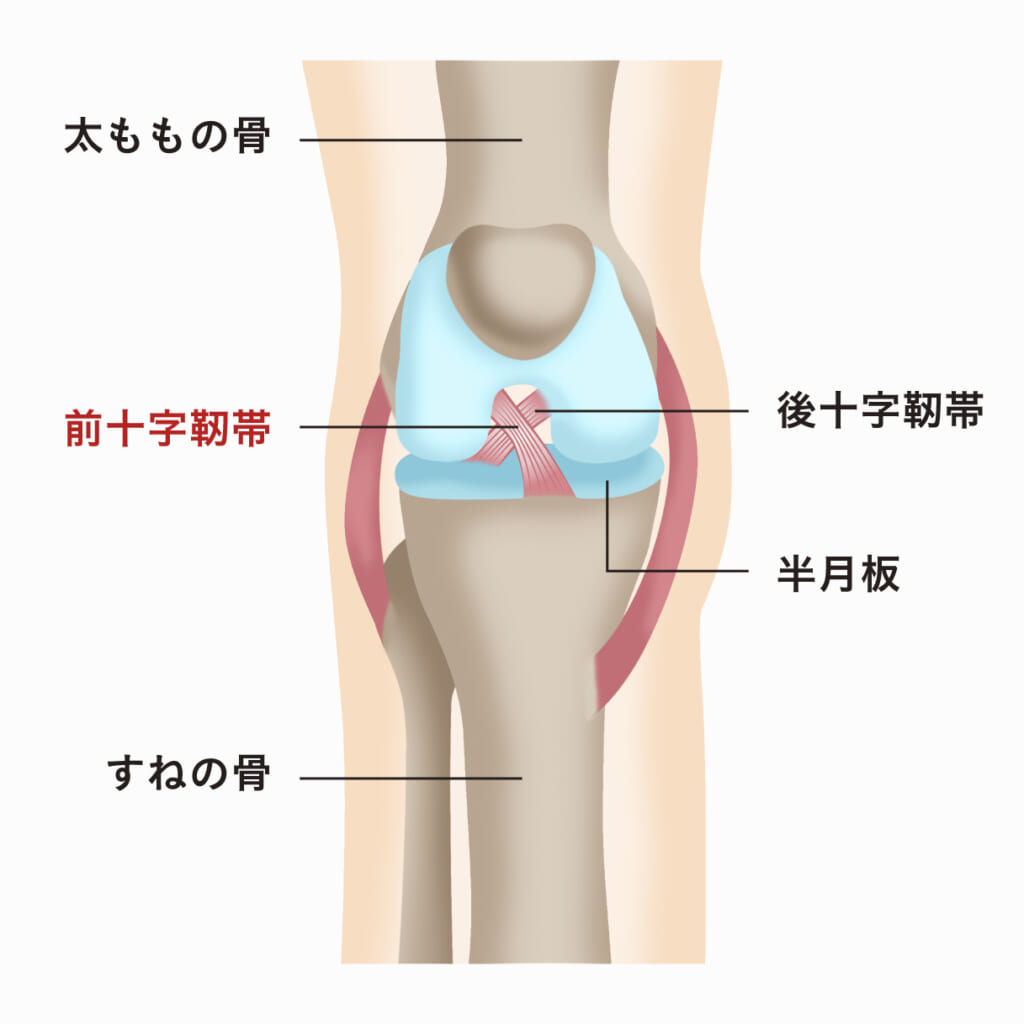
The Posterior Cruciate Ligament (PCL) is an important ligament located in the center of the knee that connects the femur and tibia. The PCL plays a role in keeping the knee stable and preventing excessive backward movement. When the PCL ruptures, the stability of the knee is lost, which greatly interferes with daily life and sports activities. This article provides a detailed explanation of the symptoms and treatment of posterior cruciate ligament rupture.
table of contents
Symptoms of posterior cruciate ligament rupture
acute symptoms
- knee pain: The most common symptom of a PCL tear is pain felt deep in the knee. The pain can be intense, especially immediately after the injury.
- swelling: After an injury, the knee may swell. Swelling usually reaches its peak within 24 hours.
- sense of instability: Your knees may feel unstable. This is especially common when going down stairs or doing activities that put stress on the knees.
chronic symptoms
- persistent pain: Pain may persist over time. The pain may increase, especially after exercising or walking for long periods of time.
- limited range of motion: The range of motion of the knee may be limited. You may have difficulty fully extending or bending your knee.
- muscle weakness: The muscles around the knee may become weak, which can lead to further instability of the knee.
Causes of posterior cruciate ligament rupture
The main cause of PCL tears is a strong external force applied to the knee. Specifically, the following situations are possible:
- traffic accident: If you slam your knee against the dashboard, your PCL may tear.
- sports injury: In sports such as soccer, rugby, and skiing, direct impact to the knee can cause rupture.
- fall down: PCL rupture can also occur if you fall with your knee bent.
Diagnosis of posterior cruciate ligament rupture
- Interview and inspection: First, the doctor will take a detailed interview about the patient's symptoms and injury. Next, we will visually inspect your knee for swelling or deformity.
- Manual inspection: Manual tests such as the posterior drawer test and the Lachman test are performed to assess the stability of the knee.
- image test: X-rays and MRI are used to confirm PCL tears. MRI is particularly effective for checking ligament damage in detail.
Treatment for posterior cruciate ligament rupture
Conservative therapy
- rest and icing: Initial treatment involves resting the knee and applying ice. Icing is recommended several times a day for about 20 minutes each time to reduce swelling and pain.
- compression and elevation: Use a compression band or bandage to compress the knee and reduce swelling. Elevating your knees above your heart can also reduce swelling.
- physical therapy: Rehabilitation will be performed to strengthen muscle strength and improve range of motion. Under the guidance of a physical therapist, exercise therapy is performed to restore stability to the knee.
surgical therapy
Surgery may be considered if conservative treatment does not improve symptoms or if the patient wishes to return to competition.
- PCL reconstruction: The PCL is reconstructed using autologous tendon (the patient's own tendon) or artificial ligament. Surgery is usually performed arthroscopically.
- Post-operative rehabilitation: After surgery, rehabilitation will be carried out in stages. Your knee will be immobilized for several weeks after surgery, and then you will gradually expand your range of motion and perform exercises to restore muscle strength.
prevention and control
- proper training: By strengthening the muscles around the knee and keeping it flexible, you can reduce the risk of PCL tear.
- Appropriate orthotic use: Using a knee support or brace during sports activities helps keep your knees stable and reduces the risk of injury.
- early treatment: If you experience pain or instability in your knee, it is important to seek medical attention as soon as possible. Early treatment can prevent symptoms from worsening.
summary
A posterior cruciate ligament tear is an injury that has a significant impact on the stability of the knee. Early diagnosis and appropriate treatment can speed recovery and help return to daily life and sports activities. If you experience pain or instability, we recommend that you seek medical attention immediately. A combination of physical therapy and surgical therapy can help many patients regain an active life.
Supervision: Dr. Yasushi Tsuda
